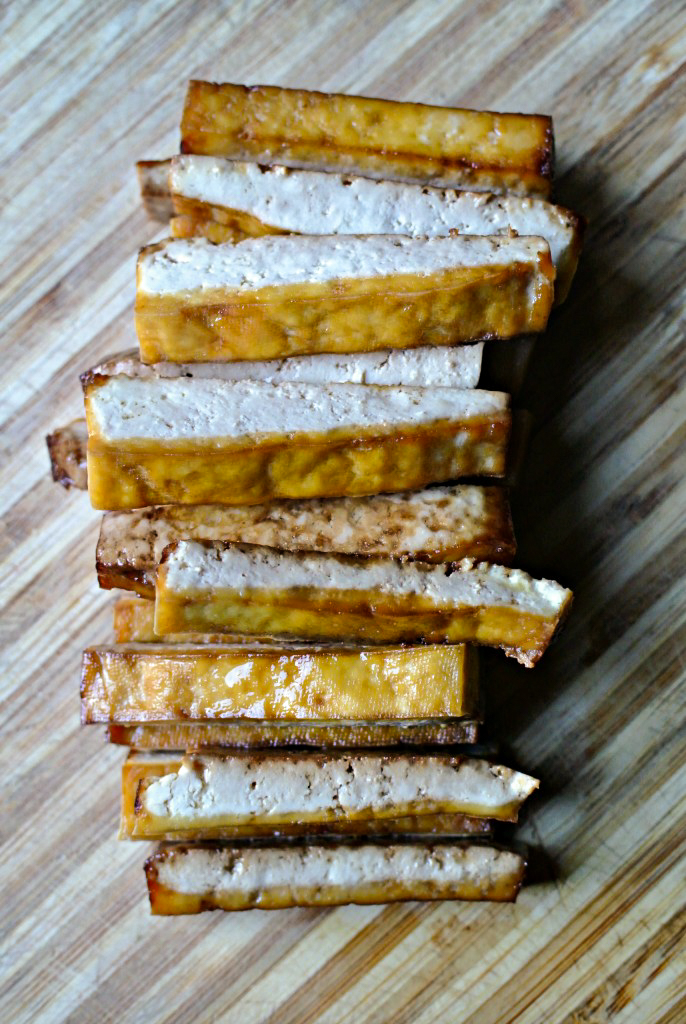I get a certain satisfaction from folding something neatly and securely into a tidy package: baked goods in parchment paper, a parcel in brown paper to be shipped in the mail, a tee shirt just out of the dryer.
I love rolling and wrapping Thai Spring Rolls, too. It requires a certain amount of skill but with practice you can get quite good at it.
Decide what you want inside your spring rolls. Customize them with your favourite fillings: vegetables, fresh herbs, tofu, shrimp, beef, or pork. Think about adding noodles, like rice vermicelli or soba noodles.
My favourite fillings include lettuce, sprigs of cilantro and mint (basil is good too), grated carrot and thinly sliced cucumber sticks. Celery, jicama, and bean sprouts would also be good. Anything to give your spring rolls that nice needed crunch.
I like to add tofu, which has been marinated in tamari and sesame oil (a big generous splash of each), and then baked in a 450 degree oven for about 20 minutes or until golden.
Wash and prep all your ingredients and have them ready as you begin to assemble your spring rolls.
Next, you soak your rice paper.
Add warm water to a large shallow bowl or pie plate, and dip the rice paper in the water until it is fully submerged. The rice paper is delicate so don't soak it too long or it will fall apart when you start rolling.
Soak until it feels firm yet soft enough to work with, usually 30 seconds.
It will still feel slightly firm when you pull it out of the water but will continue to soften. It might take practice to figure out what the right amount of firmness/softness feels like but you will soon catch on.
Have a damp clean kitchen towel next to you while you roll. The damp towel prevents the wrapper from sticking. Lay the rice wrapper on it.
Now start assembling your ingredients and begin wrapping.
Lay the lettuce first and then layer on the other ingredients. Do not over-stuff your roll. Start small and take it from there. Place everything at the bottom third of the wrapper and roll upwards and over the filling, tucking the wrapper under to pull the ingredients together. This helps your rolls be firm not floppy.
I do one complete roll, fold in from the sides and roll again.
The more rotations of rice paper you have, the stronger the rice paper will be and less likely to puncture.
It's tricky at the start; the first couple of wrappers might rip or get lumpy. It may take a few tries but once you get a feel for it you churn them out with ease.
No Thai Spring Roll is complete without a good dipping sauce. Here are recipes for two of my favourites:
Peanut Sauce
2 tablespoons peanut butter
2 tablespoons rice vinegar
1 tablespoon soy sauce
1 tablespoon honey
1/2 teaspoon of red pepper flakes
1 to 2 tablespoons water, to thin out the sauce, if necessary
Mango Lime and Ginger Sauce
4 Tbsp mango chutney
2 Tbsp low-sodium soy sauce
1 Tbsp seasoned rice vinegar
1 Tbsp fresh lime juice
1/2 tsp finely grated ginger
1/4 tsp hot sauce
Finely grated peel from 1 small lime









